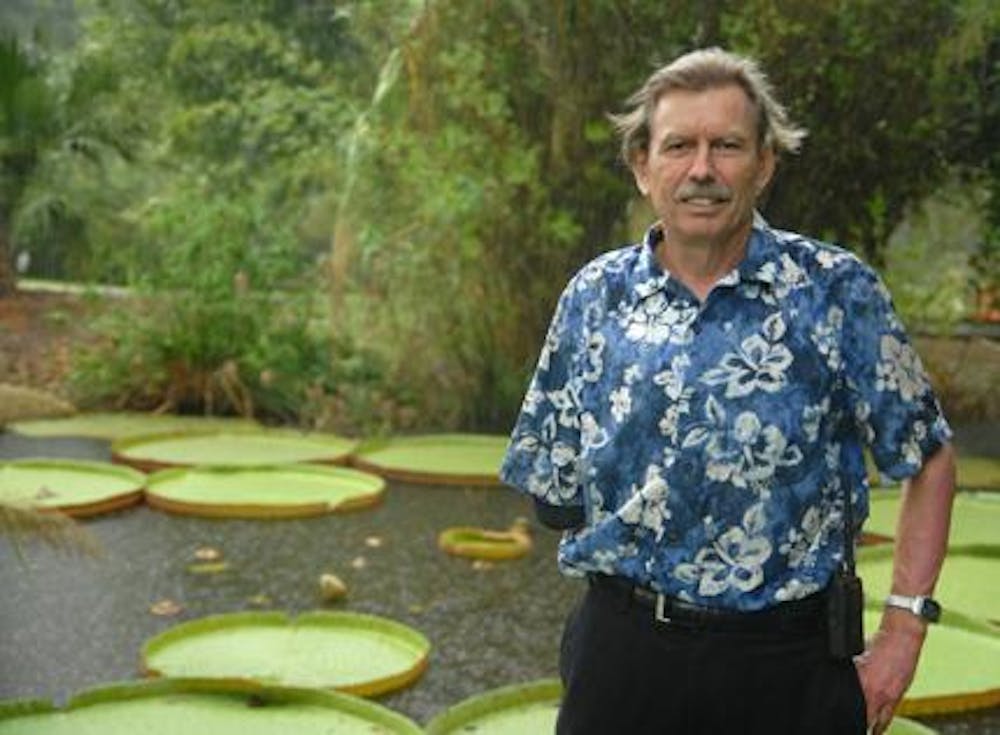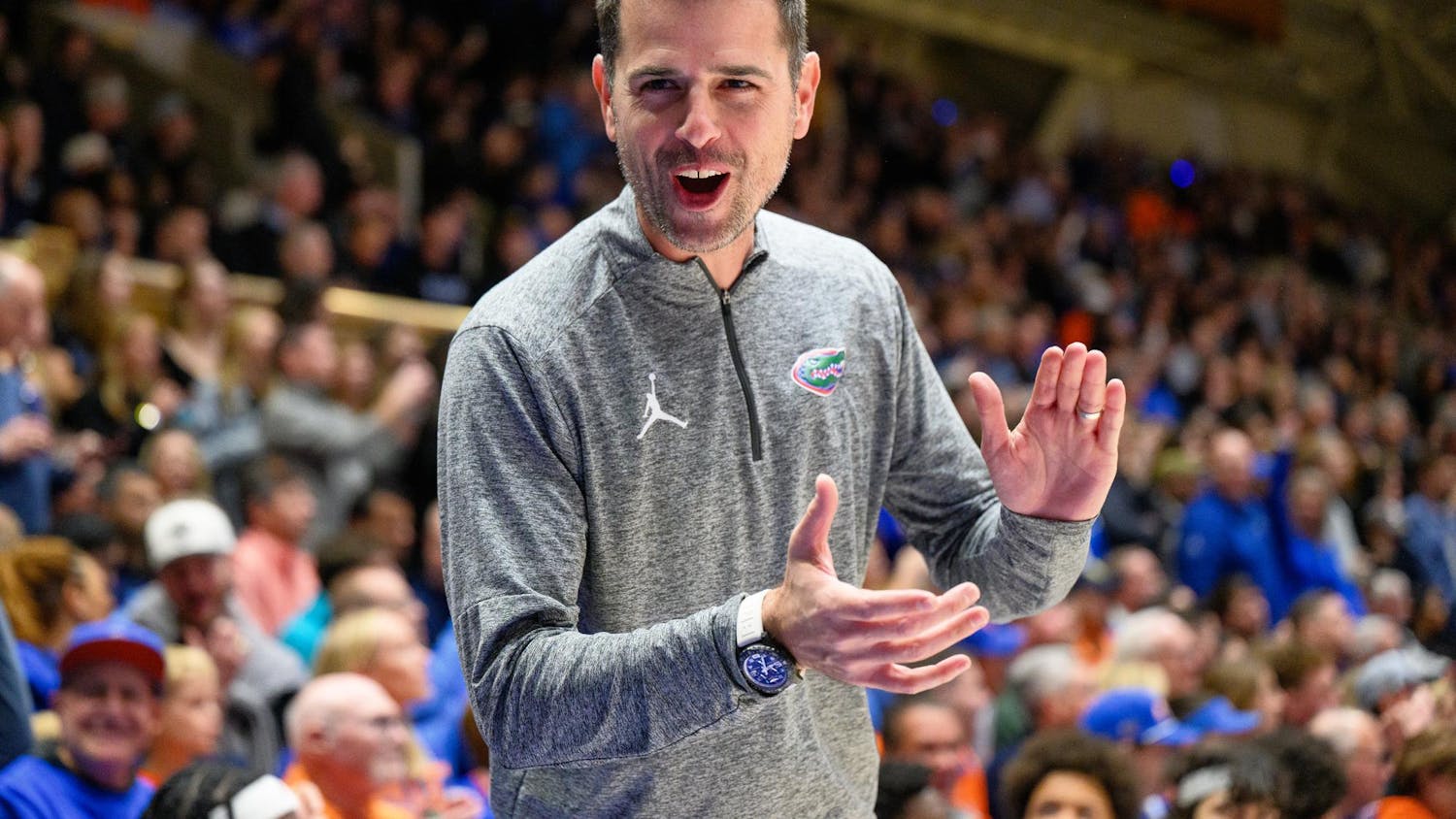As shoots of blue bamboo wave outside his office window, Don Goodman sits at his desk and pets his daughter's pug puppy with his left arm.
He lost his right arm five years ago to a 400-pound alligator named Mojo while cleaning a Victoria water lily pond.
Goodman, the director and founder of Kanapaha Botanical Gardens off Archer Road, was removing gray-green mats of algae from the pond when the 11-foot alligator launched out of the water and snapped onto his arm.
However, the accident has not deterred him from caring for one of his favorite plants, which became the largest in the U.S. in mid-August.
Goodman said the leaves of the record-breaking Victoria water lily measure 7 feet 9 inches.
The Victoria water platter, the world's largest water lily, has been one of Kanapaha's signature plants for 20 years.
Goodman said it's one of his favorite plants because of its unique qualities. New leaves, which look like spiny gloves, unroll and grow to look like big-rimmed platters.
Out of about 80 pea-sized seeds they germinated in February, two survived.
"One's just a shrimp," Goodman said.
However, the other plant beat the U.S. record.
"It's just the luck of the draw," he said.
Goodman tends to the Victorias about once a week during the summer to remove dead leaves from the pond and spread fertilizer.
"We really pamper ours," he said.
During the winter, the leaves will gradually get smaller until the plants are killed by cold weather, he said.
"It will be gone in two months," Goodman said. "It will be gone for good."
It produces huge white flowers that look like those of magnolias. In 36 hours, the flowers turn pink and maroon before submerging back into the water.
"This is in a class by itself," Goodman said. "It's one of the Earth's truly spectacular plants."
Goodman said he has maintained the Victorias for so long that doing it one-handed is no problem at all.
Using one hand has been a skill he's worked on for five years since the accident.
The alligator was a regular to the pond. The Kanapaha workers had always kept an eye on him.
"We never had any reason to think he was a problem," Goodman said.
While Goodman took a lunch break, Mojo moved from his regular spot by the waterfall to the pond where Goodman was cleaning moments before.
Goodman said when he came back he walked right into him.
However, Goodman said the alligator did not throw him into a panic.
"It was a moment of complete clarity," he said.
Even as Mojo attempted to yank him under the murky water, Goodman said he felt no pain.
"The only thing in my head was getting free from that alligator," he said.
Goodman said that while the alligator was rolling, it was twisting his arm off.
Suddenly, all that connected Goodman to the alligator was a white tendon.
Goodman said it wasn't a matter of "one arm or two, but dead or alive."
"Time becomes almost meaningless at that point," he said.
Snapping the tendon, Goodman ran up the pond bank away from the alligator and was quickly transported to Shands Hospital.
Mojo was killed and the arm was retrieved from his stomach. It was unsalvageable.
That was in 2002.
To this day, Goodman said he can feel the pain of every finger in his phantom limb.
However, he still has the utmost respect for alligators.
Goodman has gone through many trials like this one since he and his wife started Kanapaha in 1978.
They both graduated from UF with doctorates in zoology. At first, they began their gardening adventures with a nursery.
"Most people don't take very good care of their plants," Goodman said. "We didn't like that aspect of it."
When they started the botanical gardens, it wasn't open to the public.
In order to pay for their gardening projects, Goodman said he and his wife worked part-time in SFCC's biology programs. They didn't receive income from the gardens for about 10 years.
Goodman said it's been a trial-and-error process to find plants that will live in Gainesville's climate, which is too hot for some plants and too cold for others.
"We've blazed our own trail here," he said. "We have had to find our way in an in-between zone."
After it opened to the public in October 1987, Kanapaha gets about 40,000 visitors a year. About half of those are tourists.
"We're not Disney World and we don't try to be," Goodman said.
He said gardening in Gainesville has been conservative in the past. Gardeners would always plant the same species in their yards. Recently, that mindset has changed.
"There's just been a tremendous renaissance in plant cultivation," he said.






